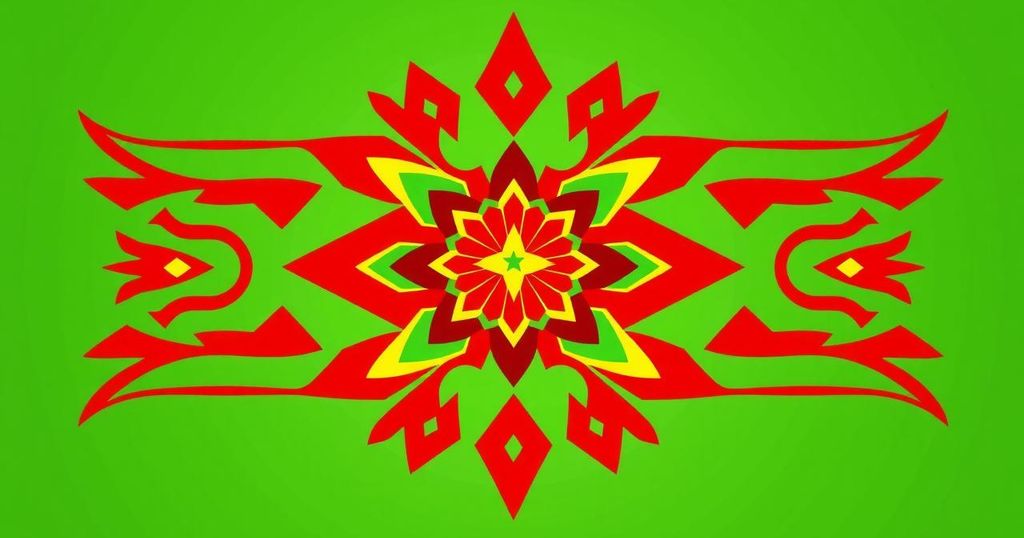Proposed Redesign of Ghana’s National Flag: A Call for Unity and Hope

The Ghana National Flag, designed by Mrs. Theodosia Salome Okoh, has undergone changes since its inception in 1957. McHenryson Agbesi proposes altering the flag by changing the black star to a white one, symbolizing hope and unity. He emphasizes the significance of names and meanings while calling for a renewed national identity to inspire a brighter future for Ghana.
The Ghana National Flag, designed by Mrs. Theodosia Salome Okoh in 1957, symbolizes the aspirations and identity of the Ghanaian people. Initially created to replace the British flag, its design is thought to reflect the situational context of the country in the late 1950s, although some argue it lacks spiritual representation of hope and a bright future.
Modifications to the flag have occurred over time, including the addition of a third star in May 1959 and changes after a constitutional referendum in 1964. The original tricolor was altered to include white in place of yellow, later reverting to the initial design featuring red, gold, and green with the black star.
National flags are crucial symbols reflecting a country’s identity, history, and values. Changes to a flag often represent shifts in leadership or ideology. McHenryson Agbesi proposes significant modifications for the Ghana flag, suggesting the color of the star be changed from black to white to represent unity and a brighter future, alongside a name change to “Bright Star.”
He outlines the meanings of the flag’s colors: red for the blood of independence fighters, gold for mineral wealth, the black star for African unity, and green for natural resources. Agbesi emphasizes the importance of altering the mindset of Ghanaians to align with the aspirations represented by a bright star.
In discussion of historical Biblical references, names and their meanings are deemed significant. Similar to how God changed people’s names to signify their futures, Agbesi advocates for the transformation of names associated with the Ghanaian flag and its symbols to reflect positivity and brightness.
The proposed flag would retain the current colors of red and gold but would replace the black star with a white star to symbolize hope and unity among Ghanaians. If regional divisions remain at sixteen, sixteen bright stars will encircle a larger central star, representing unity among regions, while preserving individual identity and aspirations.
Agbesi concludes that these changes would enhance Ghana’s image and represent a forward-looking identity in both local and international contexts, making the country a shining star not just in Africa, but globally.
In summary, McHenryson Agbesi proposes a redesign of the Ghana National Flag, advocating for a color change from black to white for the star, symbolizing hope and unity. The importance of names and their meanings is underscored, linking them to positive aspirations. The suggested redesign would maintain the flag’s essential elements while fostering a renewed national identity and aspiration for Ghana’s future.
Original Source: www.ghanaweb.com







